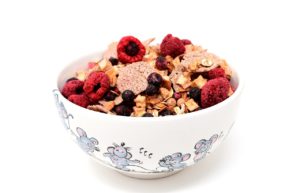Water is one of the most fundamental elements of life. Yet an estimated 2 million children die each year from diseases caused by unsafe drinking water.
But this grim picture is changing, thanks to the Children’s Safe Drinking Water program and water purification technology by P¯UR. The program is taking a fresh approach to the global problem of contaminated drinking water and is helping prevent water-related diseases and death in children. The Children’s Safe Drinking Water program, initiated by Procter & Gamble (P&G), includes emergency relief work related to natural disasters, education of local communities about the importance of clean drinking water, and the establishment of not-for-profit markets to distribute P¯UR water-cleaning technology to those in need.
Transforming Contaminated Water Into Clean Water
“This simple, cost-efficient sachet is as small as a tea bag but it makes a big difference,” says Dr. Greg Allgood, the director of the Children’s Safe Drinking Water program. “The contents of the P¯UR sachet are emptied into 10 liters of contaminated water, and following simple directions, contaminated water is clear and clean within 30 minutes.”
Studies show that P¯UR sachets reduce diarrhea, a common illness and cause of death in children, up to 50 percent. To date, the Children’s Safe Drinking Water program has distributed enough P¯UR sachets to provide 500 million liters of clean, purified drinking water to children around the world.
How You Can Help
Procter & Gamble and P¯UR support the Children’s Safe Drinking Water program. When you purchase a P¯UR pitcher or faucet-mount water filtration system at your local retailer, a percentage of that purchase will go towards the Children’s Safe Drinking Water program efforts in Kenya.
These donations go a long way to help children and expand the program. By choosing a P¯UR Water Filtration System or replacement filter to provide clean, great-tasting water for your family, you are also playing a vital role in providing clean drinking water to families and children in developing countries such as Kenya.






